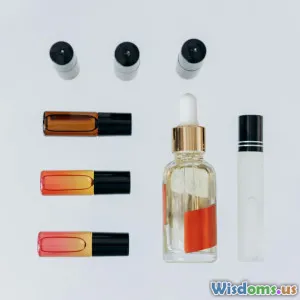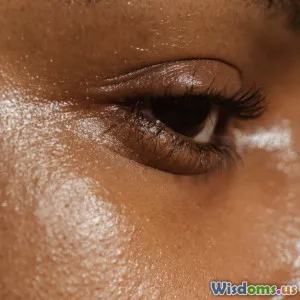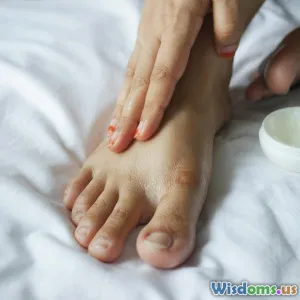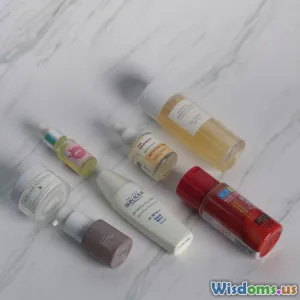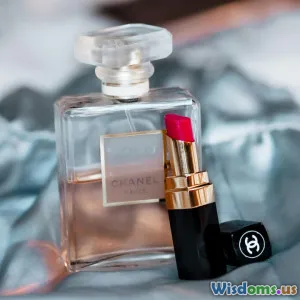
Is Double Cleansing the Secret to Clear Skin or an Overhyped Trend
8 min read Explore if double cleansing is truly the secret to clear skin or just another skincare hype. (0 Reviews)
Is Double Cleansing the Secret to Clear Skin or an Overhyped Trend?
When it comes to skincare, trends emerge and fade, but some rituals stick around because they offer real benefits. Double cleansing, a method involving two sequential face washes, has rapidly gained traction worldwide. Proponents claim it’s the key to crystal-clear skin, flawless makeup removal, and enhanced product absorption. Skeptics, however, voice concerns about added cost, complexity, and potential over-cleansing. This article examines the science and practical implications of double cleansing to determine if it's truly transformative or just another overhyped trend.
What is Double Cleansing?
Double cleansing originated in Japan and South Korea as a fundamental component of skincare routines. It involves a two-step washing method:
- First Cleanse: Using an oil-based cleanser to dissolve makeup, sunscreen, sebum, and impurities.
- Second Cleanse: Applying a water-based cleanser to remove any remaining dirt, sweat, and debris.
The theory is that oil-based cleansers effectively break down stubborn, oily residues and waterproof products—something water-based cleansers can struggle to do alone.
The Science Behind Double Cleansing
Why Oil Cleaners Come First
Oily substances attract oily residues, making oil-based cleansers exceptionally effective for dissolving cosmetics and pollutants. This aligns with the scientific principle “like dissolves like.” For example, a study published in the Journal of Cosmetic Science (2018) noted increased efficiency in removing lipid-based impurities when oil-based products were used first.
The Role of Water-Based Cleansing
Water-based cleansers typically contain surfactants that remove sweat, dirt, and any emulsified impurities left after the oil cleanse. They also help refresh and prepare the skin for subsequent skincare products like serums and moisturizers.
Benefits of Double Cleansing
1. Deep and Thorough Cleanse
Cleaning layers in two steps increases the cleanliness of the skin without excessive scrubbing. A 2019 survey by the American Academy of Dermatology reported that 68% of individuals noticed an improvement in skin clarity and texture after incorporating double cleansing.
2. Improved Makeup Removal
Makeup, especially waterproof or long-wearing formulas, can resist standard washes. Oil cleansers emulsify these products, allowing deeper removal and preventing clogged pores that lead to breakouts.
3. Enhances Absorption of Skincare Products
Fully clean skin better absorbs active ingredients, maximizing the efficacy of moisturizers, anti-aging serums, and acne treatments.
4. Tailored for Various Skin Types
Though initially popularized for oily or combo skin, gentle oil cleansers work well with dry and sensitive skin. Brands now offer fragrance-free, non-comedogenic formulas specifically designed for delicate skin.
Possible Downsides and Considerations
1. Risk of Over-cleansing
Excessive washing, particularly with harsh cleansers or aggressive rubbing, can disrupt the skin barrier, leading to irritation or dryness. Dermatologists, including board-certified experts like Dr. Whitney Bowe, caution that double cleansing should be done once a day, preferably in the evening.
2. Time and Cost Commitment
Double cleansing demands extra time, and purchasing two distinct cleasing products might strain budgets or complicate routines.
3. Not Always Necessary
Those who wear minimal or no makeup and stay indoors might find single cleansing adequate, challenging the universality of this trend.
Real-World Insights and Expert Opinions
Industry professionals have mixed views on double cleansing.
-
Dr. Neal Schultz, Dermatologist: "Double cleansing can be beneficial if you’re exposed to lots of pollution or heavy makeup, but it’s not mandatory for everyone. Skin type and lifestyle should guide your choice."
-
Beauty Lovers on Forums: Many users report near-miraculous skin improvements after adopting double cleansing, particularly in reducing blackheads and preventing breakouts.
-
Skincare Brands: The rise of cleansing balms and oils worldwide exemplifies the commercial embrace of this method, highlighting its demand and efficacy.
How to Practice Double Cleansing Properly
- Select the Right Oil Cleanser: Choose a formula suited for your skin type (mineral oil-free, fragrance-free for sensitive skin).
- Use Gentle Motions: Massage cleanser without excessive force to avoid irritation.
- Rinse Thoroughly: Use lukewarm water to remove oil.
- Follow with a Water-Based Cleanser: Opt for formulas with gentle surfactants.
- Monitor Skin Response: If dryness or irritation occurs, reduce frequency or switch products.
Is Double Cleansing Worth Trying?
If you regularly wear makeup, sunscreen, or live in urban areas with higher pollution, double cleansing may prove highly advantageous. It not only ensures makeup removal but also deep exfoliation of impurities.
However, if you have very dry or sensitive skin, proceed with caution, selecting mild products and limiting frequency to prevent damage.
Conclusion
Double cleansing is more than just a skincare fad; it’s a method steeped in scientific reasoning with visible benefits for many users. When done correctly, it supports clear, radiant skin, particularly by thoroughly removing makeup and pollutants that cause clogged pores and breakouts.
That said, it is not a one-size-fits-all solution and should be adapted to individual skin types, conditions, and lifestyles. Overuse or poor product choices can negate its advantages. Ultimately, incorporating double cleansing thoughtfully into your routine may just unlock the clearer skin you desire, but it’s not an automatic remedy for everyone.
Are you ready to consider whether double cleansing suits your skincare needs?
References:
- Journal of Cosmetic Science, 2018, "Effectiveness of Oil-Based Cleansers in Removing Lipophilic Impurities"
- American Academy of Dermatology, 2019 Survey
- Expert quotes from Dr. Whitney Bowe and Dr. Neal Schultz
- User experiences from multiple skincare forums and review sites
Rate the Post
User Reviews
Popular Posts










